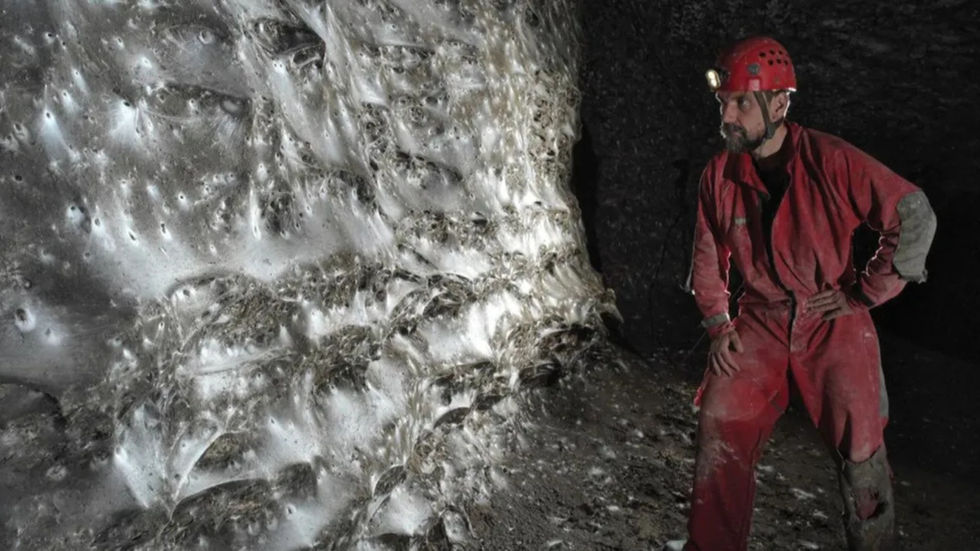World's largest spider's web the size of a HOUSE is found in underground labyrinth
The world-first discovery has been hailed by scientists as 'extraordinary'
Don't Miss
Most Read
Latest
Scientists have uncovered the world's largest spider's web - housing over 110,000 arachnids - in an enormous underground labyrinth.
The colossal silk structure measures around 1,140 square feet and was found along the wall of a narrow passage deep within the cave.
The web was discovered 164 feet inside the Sulphur Cave on the Greek-Albanian border.
Despite the large number of spiders living inside the complex network, only two species of arachnids are believed to call it home.

The web was discovered 164 feet inside the Sulphur Cave situated on the Greek-Albania border
|SUBTERRANEAN BIOLOGY
TRENDING
Stories
Videos
Your Say
The species found living in the mega-structure are Tegenaria domestica, more commonly known as the domestic house spider, and Prinerigone vagans, a small spider that thrives in moisture-rich environments.
Sapientia Hungarian University of Transylvania's Dr Istvan Urak, the study's lead author, told Live Science: "The natural world still holds countless surprises for us.
"If I were to attempt to put into words all the emotions that surged through me [when I saw the web], I would highlight admiration, respect and gratitude."
The discovery is not only the largest web ever recorded, but also the first time scientists have observed two different spider species living communally.

It is the first time scientists have observed two different spider species living communally
|SUBTERRANEAN BIOLOGY
Researchers believe the web is home to 69,000 domestic house spiders and in excess of 42,000 Prinerigone vagans.
They noted the sheer heaviness of the silk structure was so great that certain parts of it could "detach from the wall under its own weight".
In the Subterranean Biology journal, the authors wrote: "We report the discovery and detailed analysis of an extraordinary spider assemblage in Sulphur Cave."
The scientists also theorised that the sulphur-rich nature of the cave may have forced the arachnids to clump together in huge numbers.
REMARKABLE ANIMALS - READ MORE:
- Giant jellyfish weighing 35kg invading British waters in record numbers
- Blue dogs spotted in Chernobyl nuclear disaster site as scientists left baffled by bizarre animals
- Scientists hail 'complete surprise' as DINOSAUR egg is found by world-famous river
- Police launch bizarre probe after CROCODILE found in UK river

Researchers believe the web is home to 69,000 domestic house spiders
|SUBTERRANEAN BIOLOGY
Researchers suggested that domestic house spiders would usually devour the smaller Prinerigone vagans species - but the lack of light within the cave may be impairing their vision.
The domestic house spiders appeared to be consuming midges which also live in the Sulphur Cave.
Further examinations found the spiders living inside the labyrinth are genetically different to those on the outside.
This suggests that the arachnids have have adapted to thrive in the harsh cave environment.
Dr Urak said: "Often, we think we know a species completely, that we understand everything about it, yet unexpected discoveries can still occur.
"Some species exhibit remarkable genetic plasticity, which typically becomes apparent only under extreme conditions.
"Such conditions can elicit behaviours that are not observed under 'normal' circumstances."
The researchers concluded the study by noting that the "Sulfur Cave in the Vromoner Canyon located on the border between Greece and Albania contains exceptionally abundant and diverse invertebrate communities that thrive in total darkness."
Their research was published in the journal Subterranean Biology.
Our Standards: The GB News Editorial Charter











